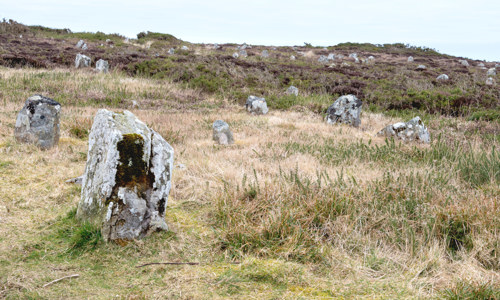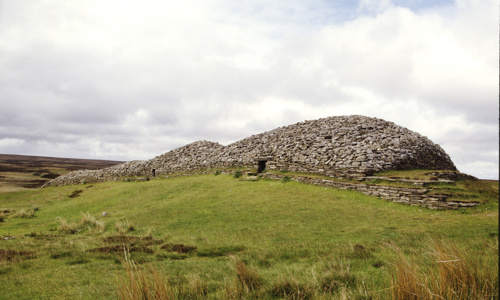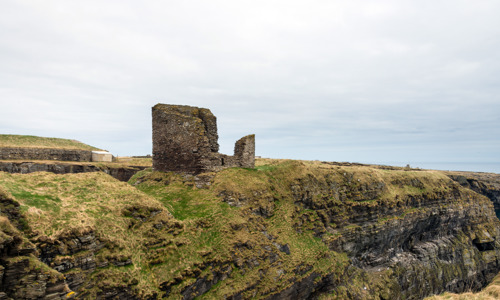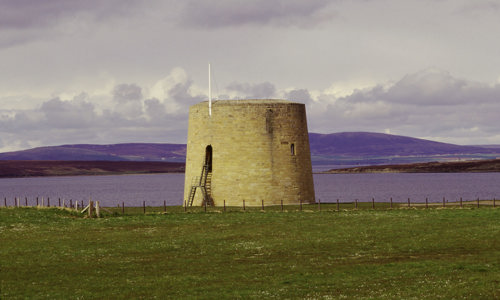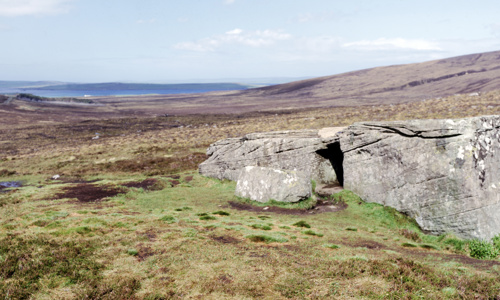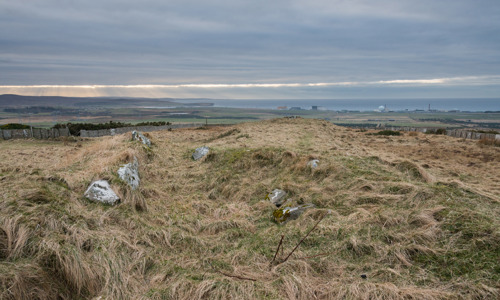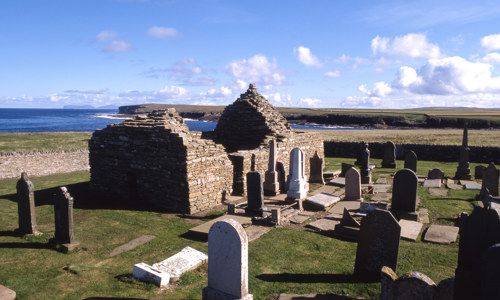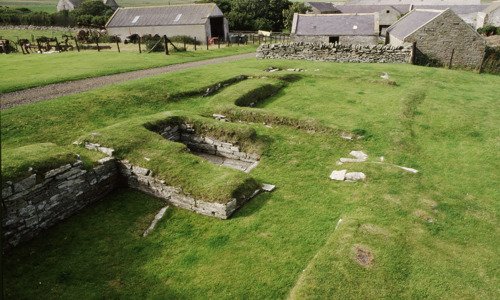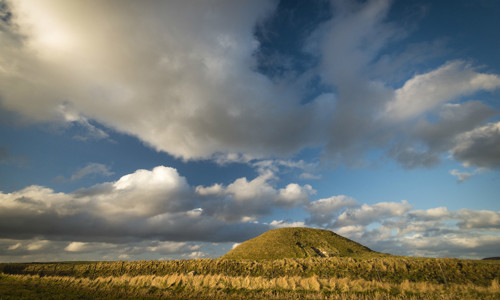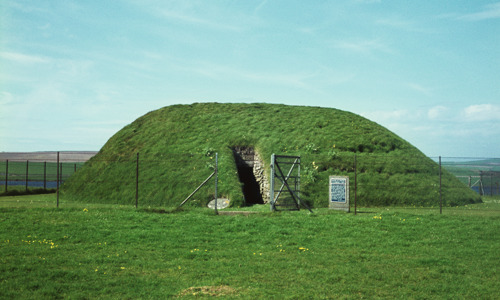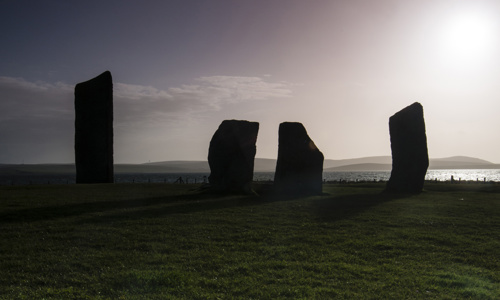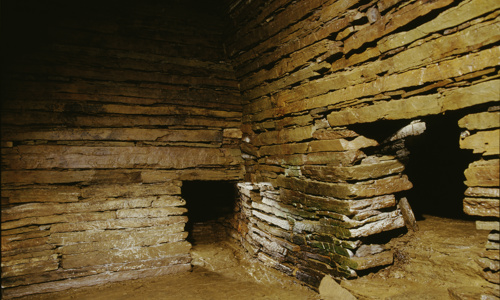History
The tomb would have originally looked a lot more impressive than it does today, with 3m high walls sealed by massive stone slabs forming roof lintels. The roof collapsed long before the tomb was excavated, sealing the burials that had been placed in the chamber.
Inside the tomb
On the floor of the main chamber within the cairn was a mass of burnt material, including charcoal and fragments of human bone – suggesting the chamber had been used for cremations. In the antechamber, above a layer of ash, were the unburnt remains of at least seven people. Artefacts accompanying the remains included:
- leaf-shaped flint arrowheads
- neolithic pottery
- animal bones
Building a cairn
The original tomb was a small, round stone cairn with a central chamber, reached by a short, low passage. This was later enlarged and elaborated, with horn-shaped projections from each of the four corners, to create forecourts to the north and south.
The entrance to the tomb would have been through a small antechamber defined by two pairs of upright stones, a characteristic of chambered cairns in this area.


